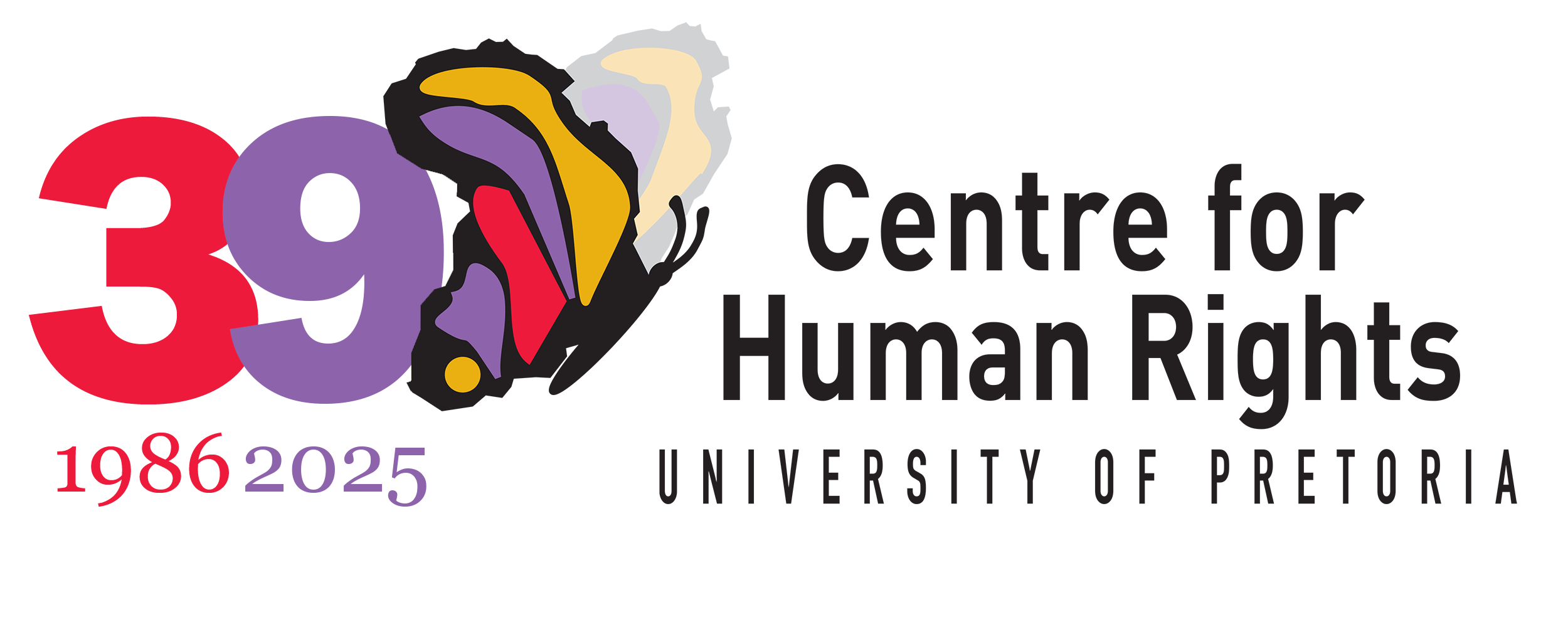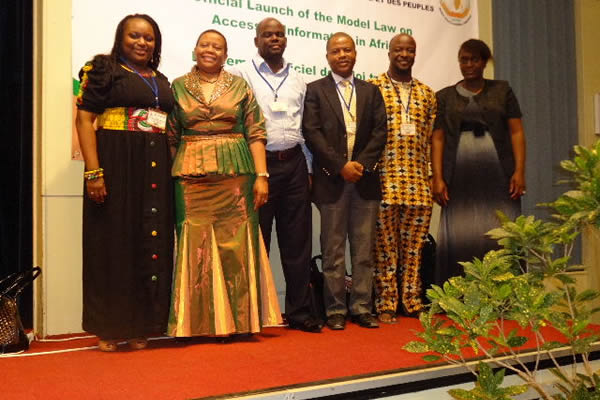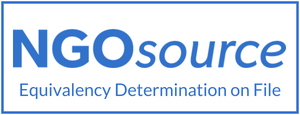For millions of Africans on the continent the event passed unnoticed, but the adoption by the African Commission on Human and Peoples’ Rights (African Commission) of a model law to inspire and guide African legislatures towards enacting access to information legislation may well usher in an era of greater openness on our continent. When the African Commission officially launched the ‘Model Law on Access to Information for Africa’ on 12 April 2013 during its 53rd Ordinary Session currently being held in Banjul, The Gambia, it for the first time adopted a model law on any topic.Several expert meetings were held, the first of which resulted in the establishment of a ten-member working group of access to information (ATI) experts tasked with developing an initial draft of the Model Law. This first draft was subsequently presented to the African Commission at its 49th Ordinary Session held in Banjul, The Gambia in April 2011.
To ensure further and more in depth consultation with stakeholders, between June 2011 and June 2012, four sub-regional consultations were held in Mozambique, Kenya, Senegal and Tunisia, to elicit feedback on the draft Model Law. Additionally, a public call for comments on the draft Model Law was made by the African Commission. The feedback received from these consultations and the public call were considered by the working group and informed the final text of the Model Law.
![]() Download the Model Law on Access to Information for Africa (English)
Download the Model Law on Access to Information for Africa (English)
![]() Téléchargez Loi Type pour l’Afrique sur l’Acces a l’Information (Francais)
Téléchargez Loi Type pour l’Afrique sur l’Acces a l’Information (Francais)

Statement at the Launching of the Model Law On Access to Information in Africa at the 53rd Session Of The African Commission on Human and Peoples’ Rights
Frans Viljoen, Director, Centre for Human Rights, University of Pretoria
12 April 2013
The roots of the Model Law lie in the African Charter on Human and Peoples’ Rights and, more specifically, in articles 1 and 9. Article 1 places the obligation on all state parties to the Charter to give effect to the rights in the Charter, including through legislative means, that is, by way of domestication. One of the Charter provisions that needs to be domesticated is article 9, the right to receive information, referred to as the right of access to information.
Given that access to information is a relatively complex and specialised subject field, in which states often have insufficient experience and expertise, the Model Law aims to guide national legislators in ‘converting’ or ‘transforming’ the open-ended formulation in article 9 into detailed legislative provisions, allowing for an effective national system for accessing information, held primarily by the states, but also by private entities performing public functions. The Model Law remains what its title proclaims, a model to be adopted and adjusted to suit the specific national circumstances and conditions of particular states.
The rationale for the Model Law lies in the imperatives of democracy and good governance.
Democracy
In a participatory, people-centred democracy, information should not as a rule be viewed as ‘secret’, and as only accessible to the citizenry at the unguided discretion of officials. Rather, information should be made asfreely available as possible, to enable the people – who are after all the chief stakeholders in a democracy – to participate in the democratising process, to hold government accountable and ultimately to exercise informed democratic choices. In other words, the adoption of access to information legislation signals a shift towards a state and society where the fall-back position is that information is available unless valid reason for security or confidentiality exist, and not the other way around.
Good governance
Access to information is an instrument of good governance and may play a role in poverty eradication and the realisation of socio-economic rights. Openness is a tool to combat governance ills such as corruption, secret deals between government and multi-national companies (MNCs) to sell off land, and misappropriation of taxpayers’ contributions. In South Africa, the Access to Information Act was recently used to force a parastatal company to reveal information about a secret deal with a trans-national mining company that had a significant effect on the price of and access to electricity in the country.
The implementation of access to information legislation is also likely to lead to improvements in record keeping and archives, which are critical elements of good governance.
Process
I now highlight a few features of the Model Law process for the adoption of the Model Law.
The elaboration and drafting of the Model Law took place under the auspices of the African Commission on Human and Peoples’ Rights, and with the guidance and consistent involvement of the Commission’s Special Rapporteur on Freedom of Expression and Access to Information, Advocate Pansy Tlakula. The Commissioners themselves also made valuable contributions to the draft. The process kicked off in November 2010, when the Commission gave its official stamp of approval, through a Resolution mandating the drafting process. Finally, it was the Commission that approved the Model Law, at its extraordinary session in February 2013.
It was a lengthy, thorough process, spanning almost two and a half years, culminating in the adoption of the Model Law. It was thus also a costly process, giving rise to the need from support by funding partners. The main donor and supporter has been the Open Society Foundations.
The drafting process benefited from the experience and expertise of very knowledgeable people, who selflessly sacrificed talents and time to advance the Law’s elaboration and adoption. After an initial consultative broadly-representative meeting in Pretoria, a working group was constituted. But the most crucial work – the actual drafting – was done by a smaller group, the Drafting Group. The Working Group members were: Mr Chibuzor Ekwekwuo; Ms Anta Guissé. Mr Maxwell Kadiri, Ms Sampa Kangwa-Wilkie, Mr Henry Maina, Ms Irene Mbegue-Eleke, Ms Tammy O’Connor Ms Chantal Kisoon and Ms Ololade Shyllon.
The drafting process shared some characteristics of the Model Law itself, in that it had been transparent and inclusive. Comprehensive consultations resulted in many comments being solicited and incorporated into various drafts: Four regional consultations were held: in Mozambique (for Southern Africa), Kenya (for East Africa), Senegal (for Central and West Africa) and Tunisia (for North Africa). Drafts were placed on the website of the Commission and Centre for Human Rights, and comments given online were incorporated in the final draft.
The Centre for Human Rights played a coordinating role in the process. Located conveniently close to the South African Independent Electoral Commission, the seat of the Special Rapporteur’s full-time job, the Centre was able to play its co-ordinating role with the consistent support of the Special Rapporteur. At the Centre, the crucial contribution of the project manager, Ololade Shyllon, has to be singled out. She was later assisted by Ahmed Sayaad. The main word of thanks goes to the Special Rapporteur: Without her energy and resolve, we would not have been where we are today, at the launch of the Commission’s first model law – the ‘Model Law on Access to Information for Africa’.
The Model Law is the product of a two and a half year long drafting process coordinated by the Centre for Human Rights, University of Pretoria, under the auspices of the Special Rapporteur.


